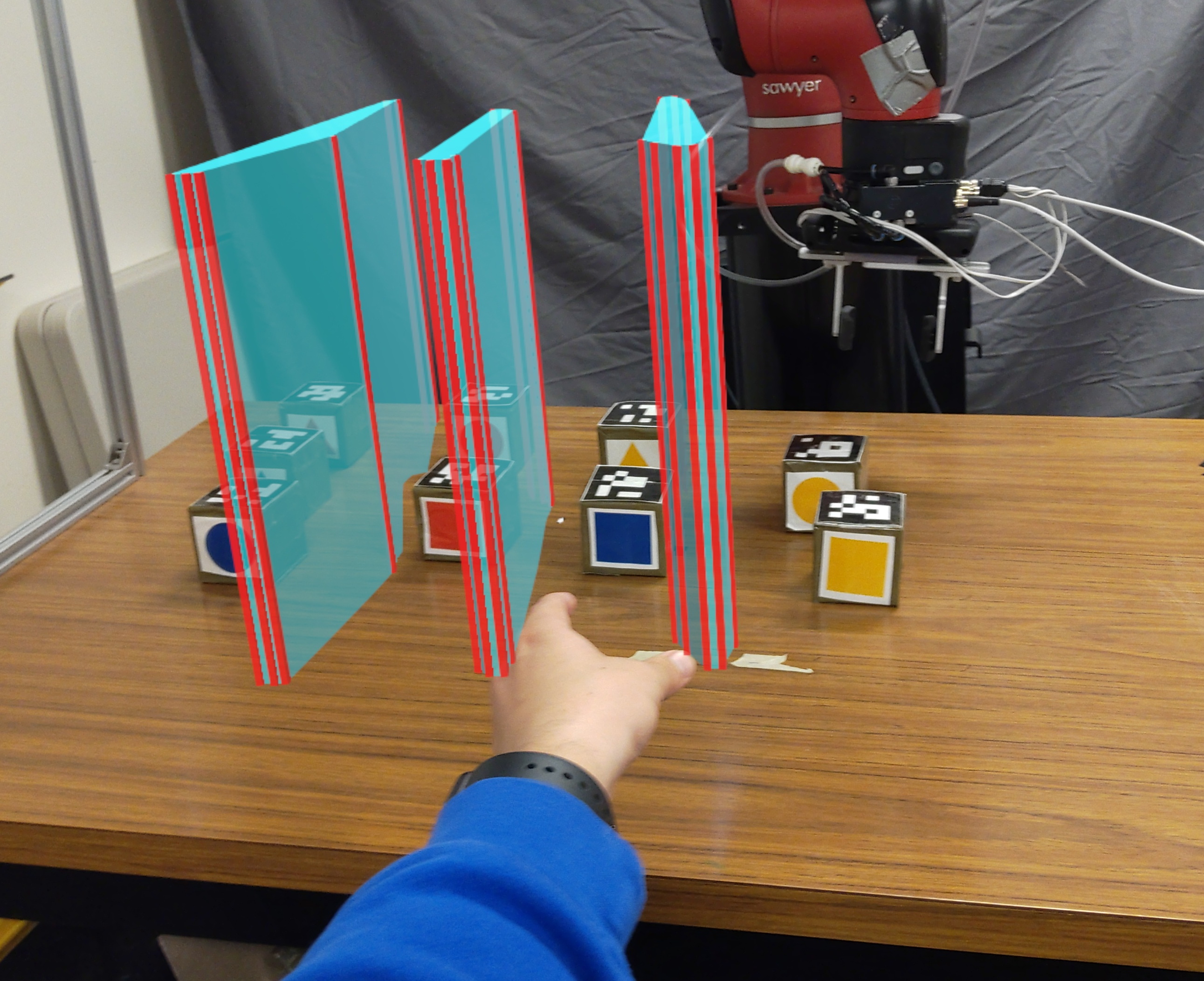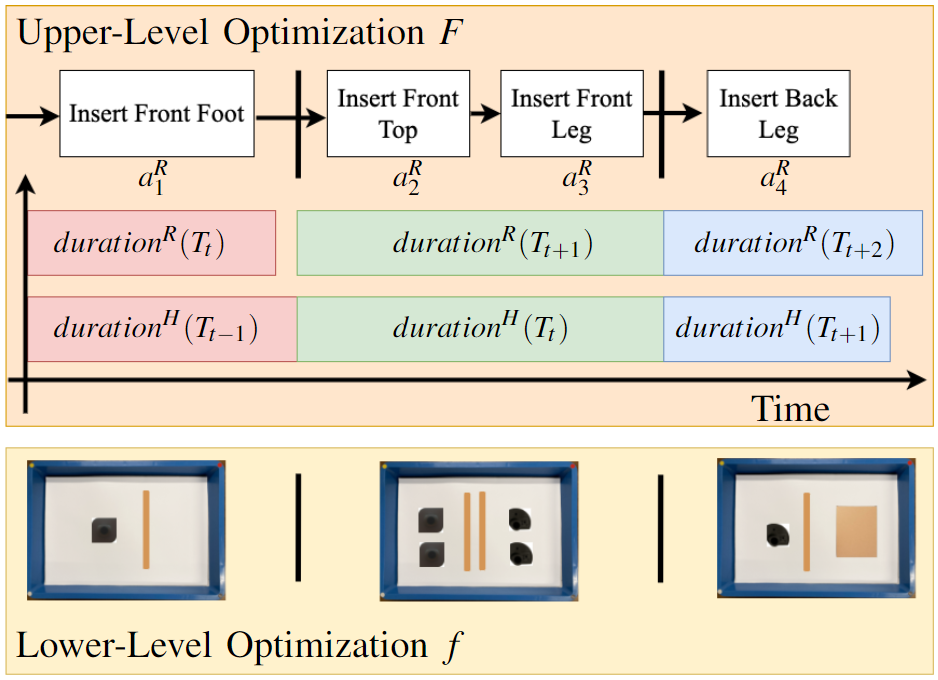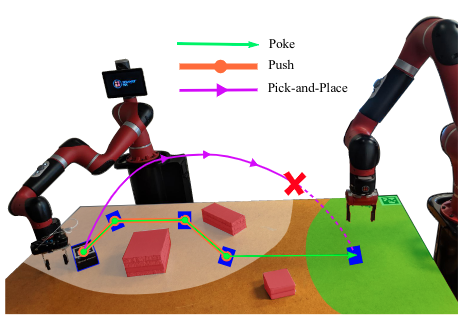Yi-Shiuan Tung

1111 Engineering Dr. ECES 111
Computer Science Dept, University of Colorado
Boulder, 80309 CO, USA
I am a PhD Student at CU Boulder co-advised by Professor Alessandro Roncone and Professor Bradley Hayes. Previously, I worked with Professor Julie Shah at MIT on flexible assembly lines for human-robot collaboration. I received my Masters in Engineering and Bachelors Degree in Computer Science at MIT in 2018 and 2015 respectively.
My research interests lie at the intersection of human-robot interaction, machine learning, and environment design. I develop algorithms that use environment design as a mechanism for improving intent inference, reward alignment, and fluency in human-robot collaboration. My work combines behavioral modeling (e.g., Boltzmann-rational agents, preference learning) with optimization and quality-diversity search to explore how modifying physical layouts or task structures improves alignment, trust, and shared understanding in real-world interactions.
news
| Jun 25, 2025 | Presented our paper on CRED: Counterfactual Reasoning and Environment Design for Active Preference Learning at the RSS Human-in-the-Loop Workshop! |
|---|---|
| Mar 13, 2024 | Presented our paper on Workspace Optimization Techniques to Improve Prediction of Human Motion During Human-Robot Collaboration at the HRI conference in Boulder! |


